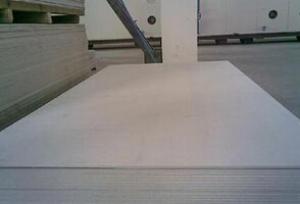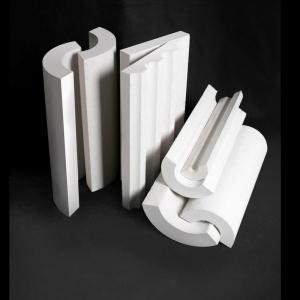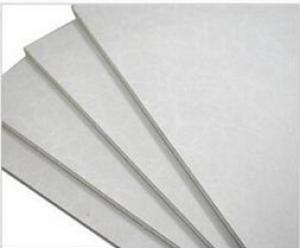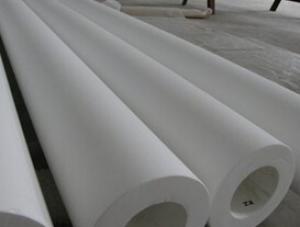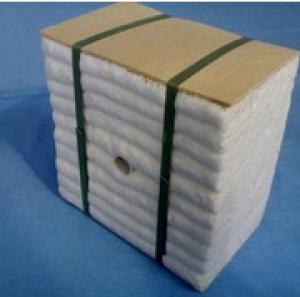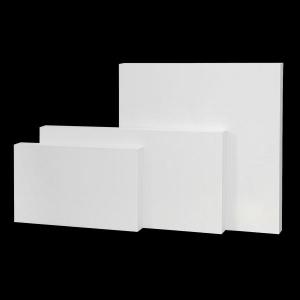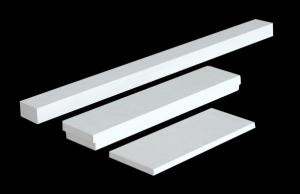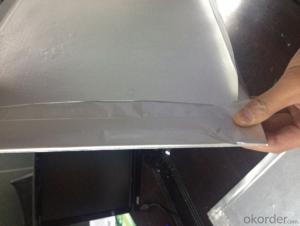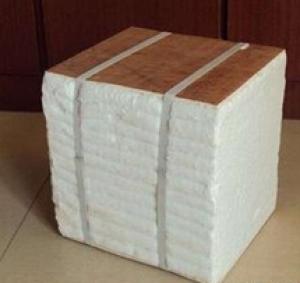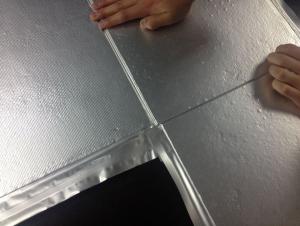Calcium Silicate Board High Temperture
- Loading Port:
- China Main Port
- Payment Terms:
- TT OR LC
- Min Order Qty:
- -
- Supply Capability:
- -
OKorder Service Pledge
OKorder Financial Service
You Might Also Like
Specifications
1.Non-asbestos,light weight2.Waterproof,heat insulation
3.high impact resistant ability
4.Calcium Silicate Board.
Calcium Silicate Board
Calcium Silicate Board is high quality building materials. The board contains inorganic raw materials .such as cement, silica powder and reinforced cellulose fiber as the main materials.All boards are autoclaved to become stable product. Fiber cement board does not contain any of asbestos, however, it has strong bending strength like those with asbestos. Fiber cement board can be applied not only for the interior use but also for the outdoor wall system. It has low water absorption rate and high impact resistant ability. These good advantages make it suitable for any purposes of applications.
Features:
100% non-asbestos
Density: 1,000 - 1,400kg/cbm
Coefficient of thermal expansion: 0.24W/MK (JC/T54)
Bending strength: over 13MPa (GB/T7019-1997)
Linear expansion rate: 0.1%
Water absorption rate: 25.4% (GB/T7019-1997)
Water penetration rate: 0%
Water content: 10%
Incombustibility according to CNS 6532 and BS 476 standards
Two point five three hours of fire rating for 6mm wall system with W-CSP concrete
Radioactivity: GB6566-2000 standards
Characteristic: nonflammability A grade (GB-8624-1997)
Light weight
The wall is solid and firm inside, resistant to impact pressure
Painting, tiling and nailing is possible in the new system
Noise reduction can be up to 46dB
Good efficiency
Working environment can keep it dry and clean for better management
Applications: can be used for partitions, interior walls, pipeline and conduit compartments, stair space, exterior walls, ceiling boards and pillar wrapping
Our products
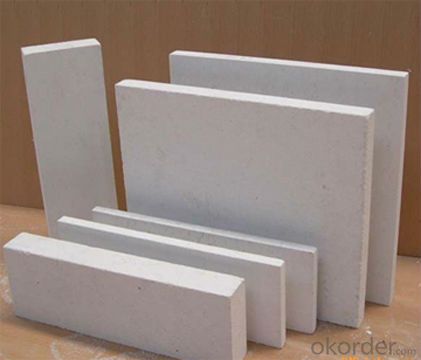
Package

- Q:What heat preservation material is used for thermal insulation of steam pipe in power plant? How thick is the bag? Please advise!
- Steam pipe in power plant thermal insulation rock wool board thickness, according to the temperature in the pipeline to choose, the higher the temperature insulation thickness is generally 80 to 150 mm.
- Q:Which is better, asbestos free calcium silicate and aluminium silicate refractory fiber?
- The two are thermal insulation materials. Calcium silicate board strength, cheap, but the use of temperature is not high, the highest 1000 degrees.
- Q:What is dew point of thermal insulation material?
- The heat insulation lining has the characteristics of low thermal conductivity, small density, high flexibility, fire prevention, waterproof, etc..Light weight, 10 96kg/m3, 20kg/m3 following mat, 24 48kg/m3 as in hard, 48 96kg/m3 as core, which 48kg/m can fand a softening point of the ceiling, 500 degrees C, 300 degrees C insulation, the larger the amount, k=0.9.Calcium silicate insulation product was successfully developed in 70s. It has the characteristics of high compressive strength, small thermal conductivity, convenient construction and repeated use. It has been widely used in power systems.Most of the domestic universal small workshop production, have been imported from the United States after the four production lines, advanced technology, instant rejection speed fiber, dry needle felt, stable quality, high temperature 800 to 1250 DEG C.Features: acidity derivative of more than 2, high temperature resistant, general chemical pipe 1000 degrees C more, must use this material. The temperature is about 2000 C.
- Q:What's the difference between white cement and ordinary cement?
- The main chemical composition of Portland cement clinker is calcium oxide, silica, alumina and iron oxide. Calcium oxide mainly derived from calcareous raw materials, such as limestone, chalk, marl; alumina and silica from aluminum silicate containing substances, such as clay, blast furnace slag and fly ash; iron oxide is used in sulfuric acid production of sulfur iron slag. For the content of calcium oxide production of Portland cement lime materials in 52%; silicon oxide content of clay in raw materials up to about 57%, the alumina content is less than 20%. In order to reduce the calcination temperature and to produce part of the melt during calcination, a small amount of iron oxide is often added. Of raw materials but also control the content of alkali and Magnesium Oxide, Magnesium Oxide is content in the cement clinker should be less than 5%, total alkalinity (Na2O+K2O) for general cement should be less than 1.2% of low alkali cement should be less than 0.6%.
- Q:What is the difference between calcium silicate board and cement fiber board?
- The common point between fiber cement pressure plate and calcium silicate board1, both of the raw materials are similar in composition, both contain silica fume, calcium and fiber.2. Both are processed by pulping and molding.3, the appearance, shape and length and width of the two specifications are basically the same.4, there are many overlapping areas in the scope of use, such as internal and external walls.
- Q:What's the difference between white carbon and carbon black? Can they be replaced?
- There are two kinds of substances. Some aspects can be substitutedCarbon black is the hydrocarbon gas in the process of strict control of incomplete combustion or pyrolysis of a black powder.
- Q:What's the use of white portland cement?
- All the raw meal with the proper components up to the partial melting of the calcium silicate as the main ingredient, the iron content in clinker less addition of gypsum, white water ground made of rigid cementitious material, called white portland cement (the white cement).When grinding cement, allow limestone not to exceed 5% of the cement weight.Note: cement is allowed to be added to the grinding mill without damaging the cement properties. The amount of cement added shall not exceed 1% of the cement weight. The addition of additional substance must be tested and reported to the Ministry of construction materials for approval.
- Q:Why is calcium silicate board unsuitable for use in home improvement?
- Calcium silicate board called gypsum composite board, is a kind of porous material, good sound and heat insulation, in indoor air moist circumstance can attract water molecules in air, air drying, and the release of water molecules, can adjust the indoor humidity, dry, increase comfort. It is super fire gypsum material, the flame can produce endothermic reaction, at the same time, the release of water molecules to prevent the fire from spreading, and does not produce any toxic decomposition, corrosive and choking gas, will not produce any smoke or combustibles.
- Q:What is a building energy-saving materials?
- Heat insulation materials and insulation materials collectively referred to as thermal insulation materials.The commonly used thermal insulation material: mineral wool, rock wool, glass wool (in rock, slag as the main raw material, by high temperature melting, made by centrifugal methods such as cotton and thermosetting resin binder insulation products. ) foam plastics and porous polymers, expanded perlite and their products, calcium silicate insulation products, all kinds of composite insulation materials.
- Q:What are the raw materials of cement products? What's the function?
- Water is necessary for the production of cement products, the role of water is to cement hydration. Generally, the water cement ratio of concrete is 0.40~0.65. If the water is too large, it will leave a hole in the concrete, which will affect the strength, density and durability of the concrete and even cause water leakage.
1. Manufacturer Overview |
|
|---|---|
| Location | |
| Year Established | |
| Annual Output Value | |
| Main Markets | |
| Company Certifications | |
2. Manufacturer Certificates |
|
|---|---|
| a) Certification Name | |
| Range | |
| Reference | |
| Validity Period | |
3. Manufacturer Capability |
|
|---|---|
| a)Trade Capacity | |
| Nearest Port | |
| Export Percentage | |
| No.of Employees in Trade Department | |
| Language Spoken: | |
| b)Factory Information | |
| Factory Size: | |
| No. of Production Lines | |
| Contract Manufacturing | |
| Product Price Range | |
Send your message to us
Calcium Silicate Board High Temperture
- Loading Port:
- China Main Port
- Payment Terms:
- TT OR LC
- Min Order Qty:
- -
- Supply Capability:
- -
OKorder Service Pledge
OKorder Financial Service
Similar products
New products
Hot products
Hot Searches
Related keywords
